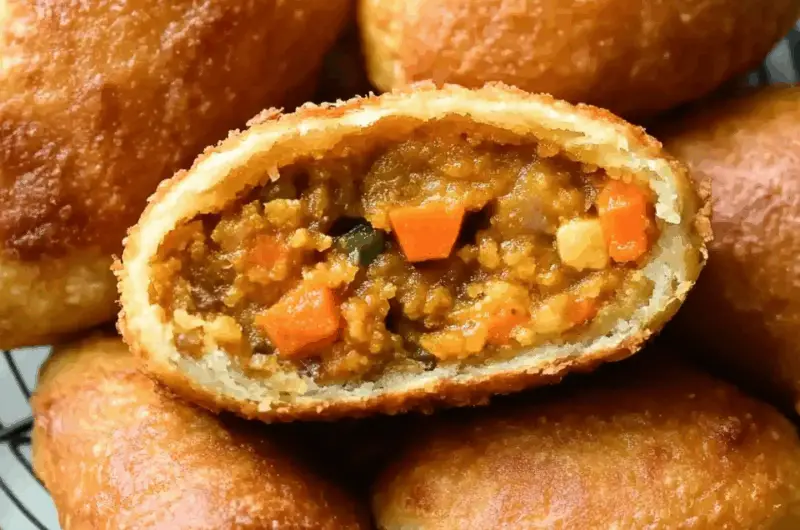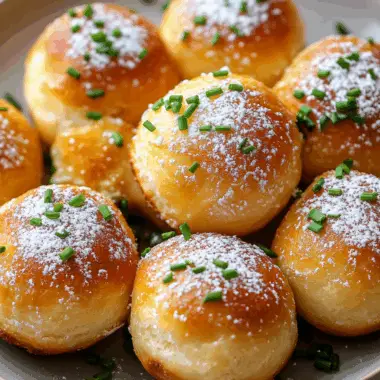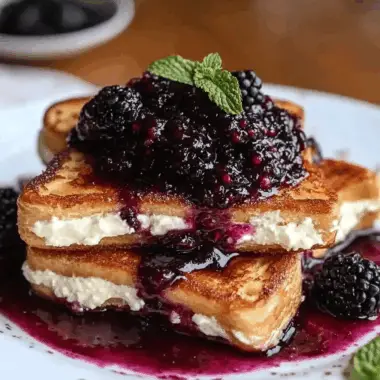The Origin of Curry Bread
The history of Curry Bread can be traced back to Japan in the early 20th century. It is believed to have been inspired by the Western-style curry dishes introduced to Japan by the British in the late 1800s. Over time, Japanese curry evolved into a uniquely flavorful dish, thicker and milder than its Indian counterpart. The concept of frying bread filled with curry likely emerged in the post-war era, when deep-fried foods became more popular in Japanese cuisine.
Curry Bread was initially sold in bakeries as a cheap and filling meal for workers and students, offering an easy way to enjoy curry while on the go. Today, it is still a staple in bakeries across Japan, often found in the prepared food section of convenience stores and enjoyed by people of all ages. Its widespread appeal comes from the contrast between the crunchy, deep-fried crust and the rich, savory curry filling, making it a unique and satisfying snack.
The Unique Appeal of Curry Bread
What makes Curry Bread stand out from other snack foods is its irresistible combination of crispy, golden bread and flavorful, comforting curry filling. The outside is crunchy and satisfying, thanks to the panko breadcrumb coating and the deep-frying process. The interior is a delicious mixture of tender vegetables, seasoned ground beef, and rich curry, creating a hearty and flavorful bite in every piece.
The bread dough itself plays an important role in the overall texture of Curry Bread. Its soft and slightly chewy interior provides the perfect contrast to the crunchy exterior, ensuring that each bite offers a satisfying mouthfeel. This fusion of crispy and soft elements, combined with the savory and aromatic curry filling, makes Curry Bread an unforgettable treat that keeps people coming back for more.
The Process of Making Curry Bread
Making Curry Bread requires a few key steps, but the effort is well worth it when you bite into that golden, crispy crust. The process begins with the preparation of the bread dough, which is made from a combination of bread flour, cake flour, and other basic ingredients like yeast, butter, and sugar. Once the dough is mixed and kneaded, it is left to rise until it doubles in size, creating a light and airy texture that will complement the crispy fried exterior.
While the dough is rising, you prepare the curry filling. This involves cooking diced vegetables like onion, carrot, and potato with ground beef, followed by the addition of soy sauce, ketchup, and Japanese curry roux. The curry roux is what gives the filling its signature richness and depth of flavor. After thickening the curry mixture with cornstarch and water, the filling is allowed to cool before being used to stuff the dough balls.
Once the dough has risen, it is divided into small pieces and rolled into balls. Each ball is flattened and filled with a generous portion of the curry mixture, then pinched shut to form a round shape. The filled dough balls are then dipped in egg and coated with panko breadcrumbs to create the crispy outer layer. After resting for 20 to 30 minutes to set the breading, the balls are deep-fried in hot oil until golden brown and delicious.
Tips for Perfecting Curry Bread
While the recipe for Curry Bread is fairly straightforward, there are a few tips and tricks to ensure that your homemade version turns out perfectly crispy and flavorful every time.
-
Dough Consistency: The dough should be soft and slightly sticky, but not too wet. When kneading, be careful not to add too much flour, as this can lead to a dense texture. The dough should be smooth, elastic, and easy to shape.
-
Curry Filling: When making the curry filling, be sure to cook the vegetables until they are tender but not mushy. The ground beef should be browned and cooked through before adding the curry roux. Don’t rush the filling’s cooking process, as the flavors need time to meld together. Once the curry has thickened, allow it to cool completely before filling the dough to prevent the dough from becoming soggy.
-
Frying Temperature: The oil should be preheated to 350°F (180°C) for deep frying. If the oil is too hot, the bread will brown too quickly without cooking through; if it’s too cool, the bread will absorb too much oil and become greasy. A thermometer is a useful tool to ensure the oil is at the correct temperature.
-
Resting Time: After breading the dough balls, it’s important to let them rest for 20-30 minutes before frying. This resting period helps the breading adhere to the dough, ensuring a crispy, even coating when fried.
Healthier Alternatives and Modifications
Though Curry Bread is undeniably delicious, it’s not exactly a light snack due to its deep-fried nature. However, there are a few ways to make this treat a bit healthier without compromising on flavor.
-
Baking Instead of Frying: One simple modification is to bake the bread instead of frying it. While the texture will be different (less crispy), you can still achieve a satisfying result by brushing the bread with a little oil and baking it at a high temperature.
-
Vegetarian Version: To make a vegetarian version of Curry Bread, simply swap the ground beef for plant-based alternatives such as tofu, tempeh, or a variety of vegetables like mushrooms or eggplant. The curry roux remains the same, and the dish can be just as flavorful without the meat.
-
Healthier Coating: For a lighter coating, you can opt for whole wheat breadcrumbs or even try using crushed cornflakes or oat flakes for a different texture and added nutritional value.
Serving and Enjoying Curry Bread
Curry Bread is best enjoyed fresh and warm, straight from the fryer, with its crispy exterior and steaming curry filling. However, it can also be served at room temperature if needed. These breaded delights make for an excellent snack, appetizer, or side dish to complement other Japanese dishes like ramen, sushi, or salad.
You can serve Curry Bread with a side of pickles or a light dipping sauce for added flavor. A simple soy sauce-based dipping sauce, or even a spicy mustard, pairs wonderfully with the rich and savory filling. If you’re serving it as part of a larger meal, it can be accompanied by a fresh salad or a bowl of miso soup to balance the richness of the curry.
Conclusion: A Perfect Fusion of Bread and Curry
Curry Bread (Kare Pan) is a delectable fusion of two beloved elements of Japanese cuisine—savory curry and soft, golden bread. This deep-fried treat offers a delightful balance of textures, with its crispy, crunchy exterior and hearty, flavorful filling. Whether enjoyed as a snack, appetizer, or part of a larger meal, Curry Bread is a versatile and satisfying dish that’s sure to please anyone with a love for savory snacks. Though it takes a bit of effort to make from scratch, the result is undoubtedly worth it. Try making this Japanese classic at home and indulge in the delicious, comforting flavors of Curry Bread!








